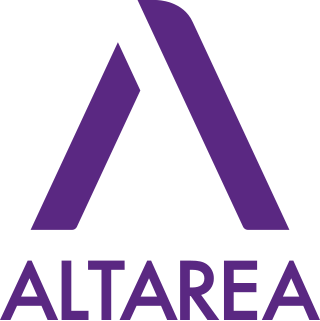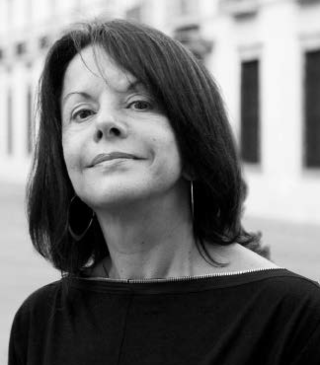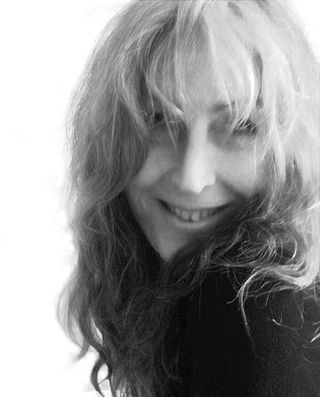
Amiens is a city and commune in northern France, located 120 km (75 mi) north of Paris and 100 km (62 mi) south-west of Lille. It is the capital of the Somme department in the region of Hauts-de-France and had a population of 135,429, as of 2021. A central landmark of the city is Amiens Cathedral, the largest Gothic cathedral in France. Amiens also has one of the largest university hospitals in France, with a capacity of 1,200 beds. The author Jules Verne lived in Amiens from 1871 until his death in 1905, and served on the city council for 15 years. Amiens is the birthplace of French president Emmanuel Macron.

Pantin is a commune in the northeastern suburbs of Paris, Île-de-France, France. It is located 6.4 km (4.0 mi) from the centre of Paris. In 2019 its population was estimated to be 59,846. Pantin is located on the edge of the city of Paris and is mainly formed by a plain crossed by national roadway 2 and 3, the Paris–Strasbourg railway line and the canal de l'Ourcq.

Rodez is a small city and commune in the South of France, about 150 km northeast of Toulouse. It is the prefecture of the department of Aveyron, region of Occitania. Rodez is the seat of the communauté d'agglomération Rodez Agglomération, of the First Constituency of Aveyron as well as of the general Council of Aveyron.

Christian de Portzamparc is a French architect and urbanist.

Jean-Claude Nicolas Forestier was a French landscape architect who trained with Adolphe Alphand and became conservator of the promenades of Paris.

AREP is a multidisciplinary consultancy that is wholly owned by SNCF. It was formed in 1997 by Jean-Marie Duthilleul and Étienne Tricaud, architects and engineers. It has 600 staff from around 15 countries, including town planners, architects, engineers, economists, technicians, designers, and project managers. Raphaël Ménard, its president since 2018, has announced his intention to make AREP the laboratory for ecological design through the EMC2B approach.

Dominique Moulon is a historian of art and technology, art critic and curator, specializing in French digital art. He is the author of the books Art contemporain nouveaux médias and Art Beyond Digital.
Édouard Utudjian was a French-Armenian architect and creator of the concept "underground urbanism" in the 1930s.

Altarea SCA is a French company dedicated to the development and investment in real estate, especially shopping centers. Its headquarters are located in France, with subsidiaries in Spain and Italy. It was founded in 1994.
The following is a timeline of the history of the city of Dakar, Senegal.
The following is a timeline of the history of the city of Abidjan, Ivory Coast.

Elizabeth de Portzamparc is a French-Brazilian architect.
André Vera (1881–1971) was a French garden designer, town planner and pioneer of the Art Deco style. He is known for his collaboration with his brother, the painter and decorator Paul Vera. He wanted to renew French design, which he felt had been in decline since the 1840s, and to introduce a modern French style that maintained continuity with earlier French tradition. He was an advocate of the formal French garden, with strictly geometrical designs based on lines and squares in place of the curvilinear forms of Art Nouveau. In urban design he stressed the importance of including trees as architectural elements, which he thought would enhance the mental and physical health of the residents.

Marcel César Poëte was a French librarian, historian and urban planning theoretician. He was a co-founder of the School of Advanced Urban Studies, where he taught, and was highly influential in developing new theories of urban planning in Paris in the first half of the 20th century.

Lukasiewicz Christophe was a French architect born in 1933 in Lublin and died in 1999 in Paris.

Patrick Boucheron is a French historian. He previously taught medieval history at the École normale supérieure and the University of Paris. He is a professor of history at the Collège de France. He is the author of 12 books and or the editor of 5 books. His 2017 book, Histoire mondiale de la France, compiled work by 122 historians and became an unexpected bestseller, with more than 110 000 copies sold. From 2017 to 2020, he hosted Quand l'histoire fait dates, a TV program of 22 episodes which explored different important dates in world history.

Olivia Chaumont is a French architect and transgender activist.

The architecture of Casablanca is diverse and historically significant. Casablanca, Morocco's economic capital, has a rich urban history and is home to many notable buildings in a variety of styles. Throughout the 20th century, architecture and urban development in Casablanca evolved in a way that was simultaneously specific to the city's contexts, and consonant with international ideas.

Paola Viganò, is an Italian architect and urbanist, currently professor at École Polytechnique Fédérale de Lausanne (EPFL) and at the University of Venice (IUAV).
Jules Edmond Camille Robida was a French architect and urban planner.

















